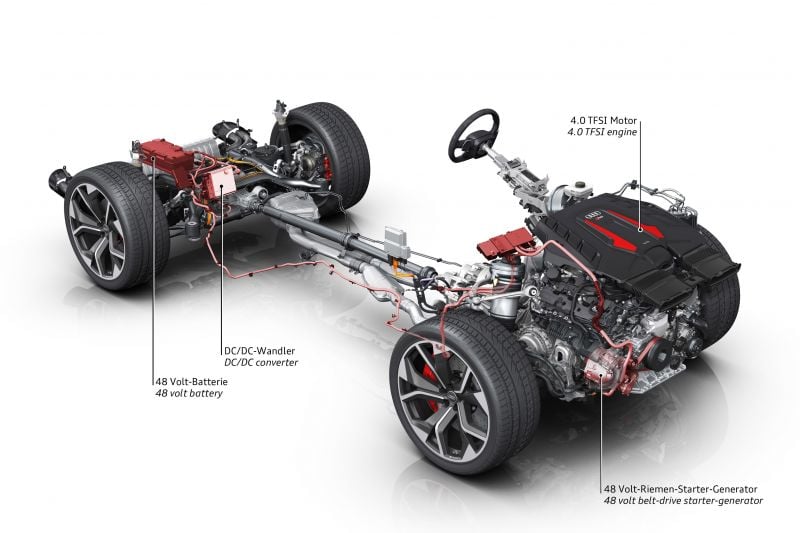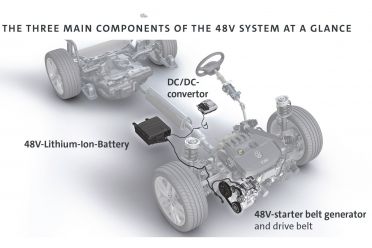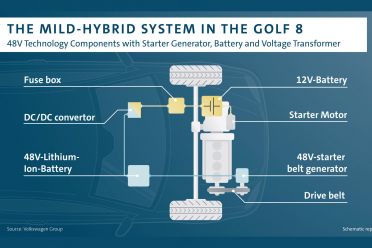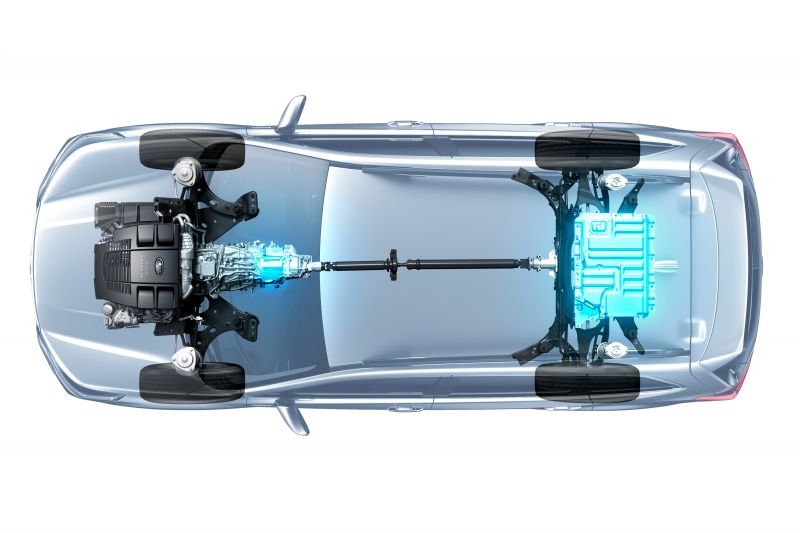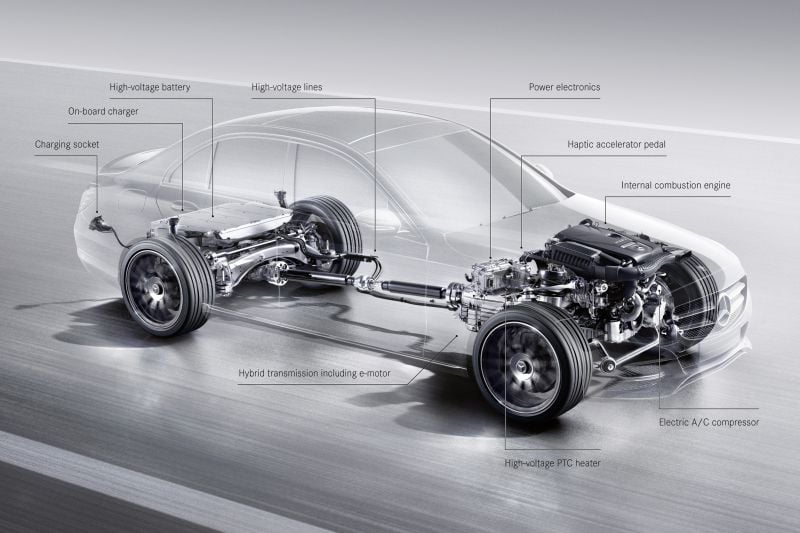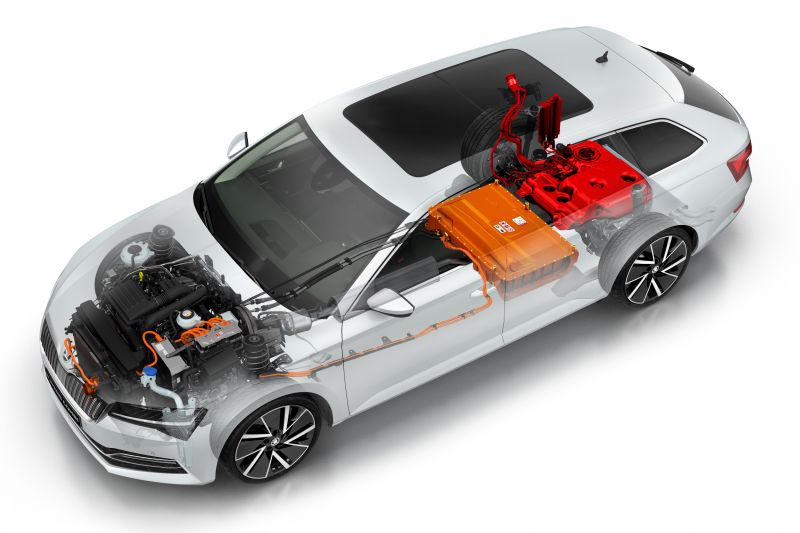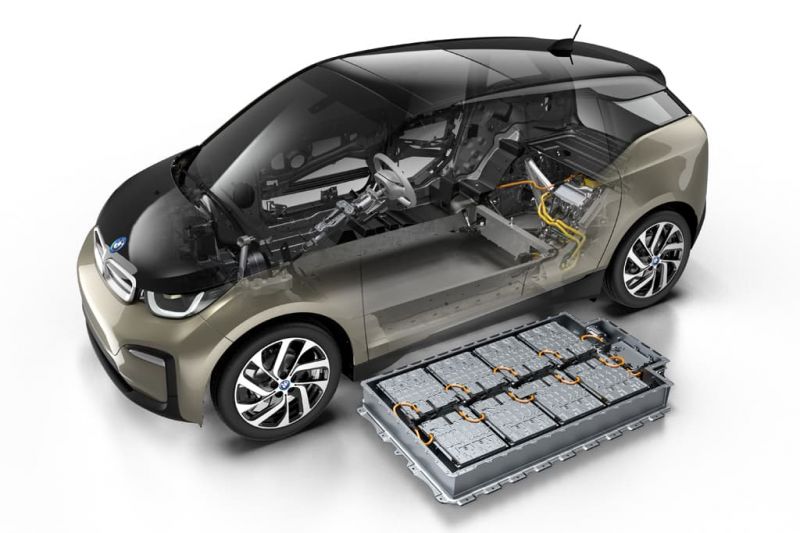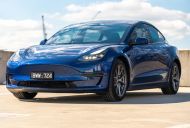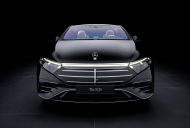Popularised by the original Toyota Prius, hybrid vehicles combine an engine with an electric motor to deliver a mix of power, economy, and refinement.
Today, hybrids have transitioned from being a niche, standalone vehicle segment to an alternative to petrol and diesel engines on the powertrain menu.
No longer the domain of eco-conscious Hollywood celebrities, these vehicles are sold by a variety of manufacturers across a broad spectrum of price points and body styles.
Hybrid vehicles are best classified by the extent to which the electric motor can drive the car, and fall under four categories – mild hybrids, standard hybrids, plug-in hybrids and range-extender electric vehicles. Let’s have a look at each of them.
Mild hybrid vehicles
A mild hybrid system replaces the alternator and starter motor found in a conventional vehicle with a small electric motor, known as a belt-driven starter generator, powered by a 48-volt battery.
Vehicles featuring a mild hybrid system may also retain the 12V battery found in non-hybrid vehicles; in this case, a device known as a DC/DC convertor enables the 48V and 12V systems to work together.
A mild hybrid system improves efficiency by using electric power to aid the engine under certain driving conditions, such as when the car is accelerating. Not only does the electric motor enable better fuel consumption, it also makes for better performance.
The key difference between mild hybrid and other hybrid systems, however, is the electric motor cannot propel the car by itself.
Certain mild hybrid systems may also include additional features such as regenerative braking.
Regenerative braking enables the system to capture and convert kinetic energy from braking into electrical energy that is stored in the 48V battery.
This can subsequently be used to power vehicle subsystems that would otherwise draw power from the combustion engine, such as the air-conditioning.
Vehicle coasting is linked to regenerative braking and features in more advanced mild-hybrid systems. Coasting takes the strain off the engine completely when the car is travelling at certain speeds and not rapidly accelerating, further improving fuel economy.
During coasting, energy from the 48V system is used to power the car’s electrical systems (including infotainment and driver assist systems) directly, enabling the engine to be turned off completely and the vehicle to coast.
The mild-hybrid system in the Audi A8, for example, enables the car to coast (with the engine completely turned off) for up to 40 seconds between 55-160 km/h.
Some jargon you’ll find at the dealership: e-HDI micro-hybrid (Peugeot), EQ-Boost (Mercedes-Benz), mHEV (VW, Audi, Skoda), B4/B5 (Volvo), IMA (Honda)
Series hybrid vehicles
A full hybrid system features a larger battery and more powerful electric motor that can propel the car by itself in certain driving conditions. This system is more fuel-efficient than a mild-hybrid, as the electric motor is able to assist the engine to a greater extent.
Depending on the driving conditions, a full hybrid system typically operates in three distinct modes: electric propulsion only, a blend of electric and engine propulsion, and engine propulsion only.
At lower speeds and for short distances in urban conditions such as stop-start traffic (typically up to 2km), the electric motor is able to drive the car directly, eliminating the need for the engine to start at all.
At higher speeds or when the vehicle is rapidly accelerating, the combustion engine kicks in to provide increased power and torque. Depending on the driving conditions, the engine may work by itself or in combination with the electric motor.
Now marketed by brands such as Toyota and Subaru as a “self-charging hybrid”, full hybrids charge their batteries through a combination of regenerative braking, and by allowing the petrol engine to act as a generator when in operation.
Some jargon you’ll find at the dealership: Hybrid Synergy Drive (Toyota), Lexus Hybrid Drive (Lexus), i-MMD Hybrid System (Honda), Direct Response Hybrid (Infiniti) e-Boxer hybrid (Subaru), RXH, Hybrid4 (Peugeot), E-Tech (Renault) ActiveHybrid (BMW), BlueTec Hybrid (Mercedes-Benz).
Plug-in hybrid vehicles
A plug-in hybrid system incorporates a battery with an even larger capacity than that of a standard hybrid, paired to a more powerful electric motor.
Due to the larger capacity of the battery, it must be recharged through mains power.
On the upside, plug-in hybrid vehicles can be driven on electric power alone for far greater distances and under a wider variety of driving conditions than standard hybrid cars.
New plug-in hybrid models can offer an electric driving range of up to 60km, with electric-only driving possible at motorway speeds.
A plug-in hybrid system works in a similar fashion to that of a standard hybrid.
However, the additional power of the electric motor and higher battery capacity allows for more flexible operation of the hybrid system.
For example, plug-in hybrid vehicles offered by Porsche offer the driver options to force the petrol engine to charge the battery to a level specified by the driver, and to also ensure that the battery holds a minimum level of charge.
These features are more relevant in Europe where certain cities have imposed congestion charges and low vehicle emissions zones.
Jargon you’ll find at the dealership: TFSIe (Audi), eDrive (BMW), PHEV (Mitsubishi), e-Hybrid (Porsche) iV (Skoda), Recharge, Twin-Engine (Volvo)
Range-extender electric vehicles
Range-extender electric vehicles are best thought of as an electric vehicle that includes a petrol powered generator.
The primary difference between range-extender electric vehicles and their hybrid counterparts is that the combustion engine cannot directly propel the car. Instead, the petrol engine serves purely as a generator to charge the vehicle’s battery.
Range extender electric vehicles are typically not meant to be filled up at service stations as regularly as a hybrid or conventional petrol or diesel vehicle.
Instead, the intention is that the petrol engine will operate to generate electricity only when a a battery charging location is not available, essentially as a stopgap so the driver can reach a plug.
Thus, the petrol generator operates only when the vehicle’s battery drops below a certain level.
The BMW i3, for example, features a range-extender variant that uses a two cylinder engine plucked from BMW’s motorcycle division, coupled with a small nine litre fuel tank to act as a generator.
Mazda, meanwhile, is rumoured to be re-introducing its famed rotary engine in a range extender variant for its new MX-30 electric vehicle.
Nissan also offers its e-Power system, which is a form of range extender. It blends a 1.2-litre petrol engine with a small battery pack and inverter, hooked up to an electric motor.
The petrol engine is only ever used to charge the battery. However unlike the BMW i3 REx, which has a large battery and only uses the combustion engine in emergencies, the e-Power system has a battery with a 1.5kWh capacity.
That means the combustion engine runs almost all the time.
Jargon you’ll find at the dealership: REx (BMW), E-REV (GM)

